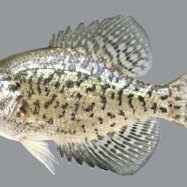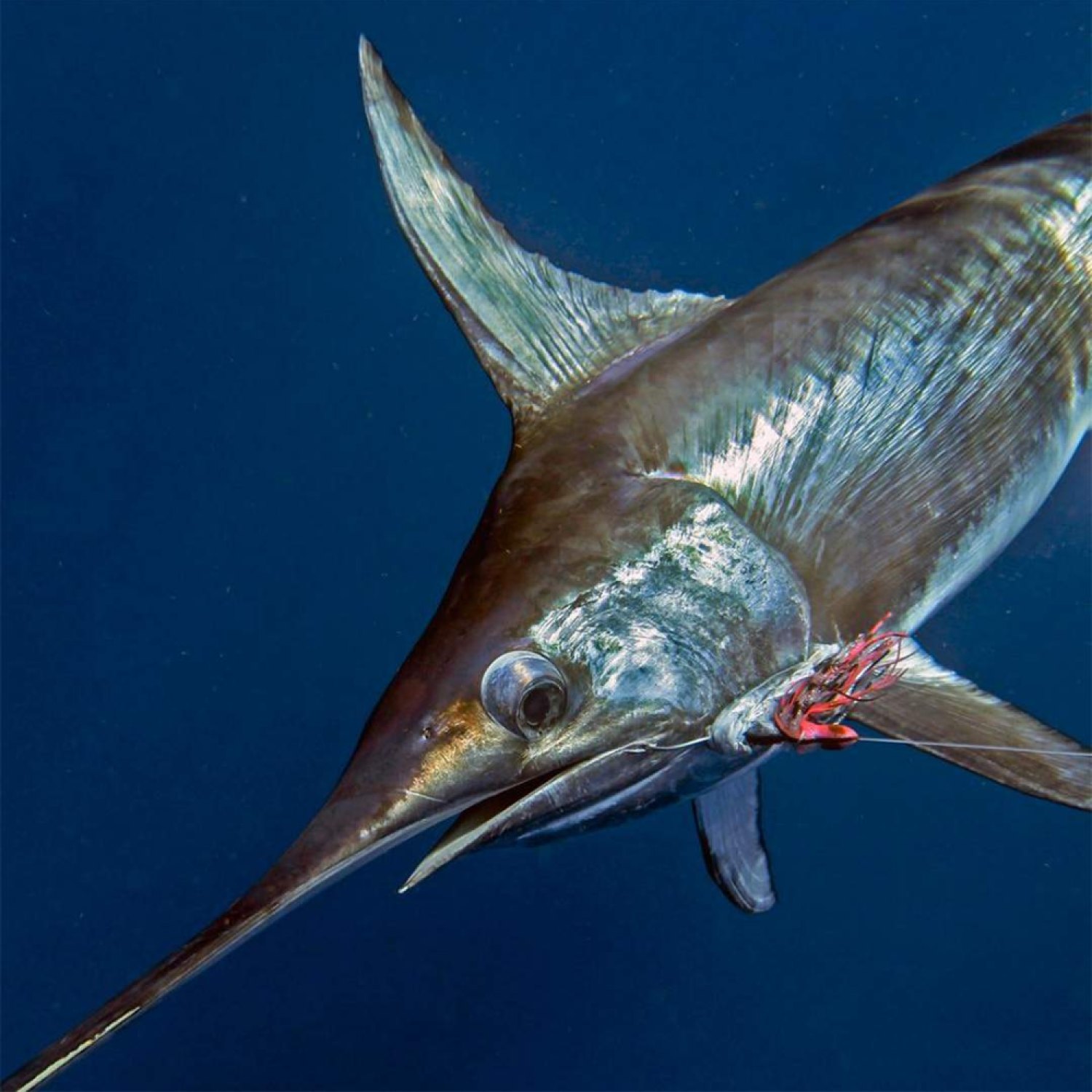
Swordfish
Up to 14 feet in length
Swordfish, also known as the gladiator of the sea, is a fascinating creature found in the Atlantic, Indian, and Pacific oceans. With its long, streamlined body and sharp, sword-like bill, it can reach lengths of up to 14 feet! Part of the Xiphiidae family, these predators are known for their impressive speed and agility in the water. Next time you're at the ocean, keep an eye out for this incredible animal.
Animal Details Summary:
Common Name: Swordfish
Kingdom: Animalia
Habitat: Oceanic waters
The Mighty Swordfish: A Master of the Ocean Depths
The ocean covers over 70% of Earth's surface, making it home to a diverse and fascinating array of marine life. Among the numerous creatures that call the ocean home, there is one that stands out with its impressive appearance and cunning hunting techniques – the swordfish.Scientifically known as Xiphias gladius, the swordfish is a true marvel of the animal kingdom. With its streamlined body, long sword-like bill, and incredible size, it is no wonder the swordfish has captivated the imaginations of humans for centuries Swordfish.
In this article, we will delve into the world of the swordfish, exploring its physical characteristics, habitat, feeding habits, and geographical distribution. By the end, you will have a newfound appreciation for this majestic ocean dweller.
A Profile of the Swordfish
The swordfish belongs to the kingdom Animalia, phylum Chordata, and class Actinopterygii – all of which are shared with other fish species. However, the swordfish is part of a unique order, Perciformes, and family, Xiphiidae, making it distinct from other marine animals.One of the first things you may notice about the swordfish is its striking appearance. The upper parts of its body are typically dark blue or black, while its belly is silver in color. This coloration serves as camouflage, helping the swordfish blend into its surroundings and avoid potential predators.
But what truly sets the swordfish apart is its elongated and streamlined body, resembling a sword in both shape and movement. Its body can reach up to 14 feet in length and weigh up to 1,400 pounds, making it one of the largest fish in the ocean Saint Berdoodle. This size and shape allow it to move swiftly and effortlessly through the waters, earning it the title of one of the fastest marine animals.
As for its name, it comes as no surprise that the swordfish gets its common name from its long, flat bill. This sword-like structure is known as a "sword" or "bill," and it can reach up to one-third of the fish's total body length. The swordfish uses its bill for more than just appearances – it also plays a vital role in its feeding method.
Habitat and Geographical Distribution
Swordfish can be found in the oceanic waters of the world, primarily in tropical and temperate regions. However, their specific country of origin is unknown, and they have a wide distribution across different oceans.The Atlantic Ocean, Indian Ocean, and Pacific Ocean are the primary areas where swordfish reside, with some populations also found in the Mediterranean Sea and the Black Sea. These fish tend to reside in deeper waters, ranging from 650 feet to over 3,000 feet. However, they can also be found in shallower waters near the surface, making them versatile ocean inhabitants.
Interestingly, swordfish do not have a specific place to call home, as they are continually on the move in search of food. Their swimming patterns are unpredictable, and they can be found in various locations at different times of the year.
Feeding Method
As mentioned earlier, the swordfish's bill serves a crucial purpose in its feeding method. Unlike other fish that primarily use their mouth to catch prey, the swordfish uses its bill to hunt and capture its food. With its sharp and powerful sword, the swordfish is a master at impaling its prey, making it one of the most efficient hunters in the ocean.Swordfish are opportunistic carnivores, meaning they will eat whatever they can find in their environment. Their diet mainly consists of squid, crustaceans, and smaller fish species like mackerel and sardines. However, they have also been known to feed on larger fish, including tuna and marlin.
The swordfish's hunting technique is both awe-inspiring and terrifying at the same time. They use their exceptional speed and agility to chase down their prey, and once they have them in their sights, they strike with precision, impaling them with their sharp bill. This technique is so effective that it has been known to kill fish much larger than itself.
Adapting to Oceanic Life
The swordfish has unique physical characteristics that have enabled it to thrive in the ocean's depths. Its streamlined body, powerful tail, and long bill are all adaptations that have helped it become an apex predator in its environment.With its elongated body, the swordfish can glide smoothly and swiftly through the water, conserving energy while searching for prey. Its powerful tail also plays a vital role in its movement, propelling it forward at impressive speeds.
The sword-like bill, besides aiding in hunting, also serves other purposes for the swordfish. It acts as a counterbalance, helping to stabilize the fish's movement while swimming. It is also believed to regulate body temperature by releasing heat through the bill's surface.
Furthermore, swordfish have a unique mechanism for regulating their body temperature called "rete mirabile." This network of tiny blood vessels works as a heat exchanger, allowing the swordfish to maintain a warm body temperature in cold ocean waters.
The Swordfish in Popular Culture
The swordfish has been featured in many cultures throughout history, making it a well-known and celebrated creature in various forms of art, literature, and mythology.In ancient Greece, the swordfish was known as the "scientific name") and was associated with the god of the sea, Poseidon, often depicted as a powerful figure riding a chariot pulled by two horses with a swordfish's head.
Today, the swordfish remains a subject of fascination and admiration, appearing in popular culture in songs, films, and games. It has also garnered attention for its portrayal as a symbol of strength, intelligence, and speed.
Conservation Efforts
Despite their impressive capabilities and importance in ocean ecosystems, swordfish populations have faced challenges due to overfishing. Swordfish are often caught as bycatch, unintentionally caught in fishing gear targeting other marine species. This, combined with overfishing for commercial purposes, has led to a decline in swordfish populations in certain regions.However, with regulations in place, including size and catch limits, the swordfish population has shown signs of recovery in recent years. Additionally, there has been a growing interest in sustainable and responsible fishing practices, which have played a significant role in conserving the swordfish and other marine animals.
The Modern-Day Swordfish
In recent years, the swordfish has made an impact in the realm of technology, particularly in the field of NLP. As one of the most intelligent and trainable fish species, the swordfish has been observed to have complex social structures and advanced communication abilities.Researchers have used this knowledge to develop NLP algorithms based on swordfish behavior and communication patterns, leading to advancements in the field of AI and natural language processing.
In Conclusion
The swordfish is undoubtedly a remarkable creature with a long and storied history. With its unique physical characteristics, impressive hunting techniques, and widespread distribution, it has captured the attention of humans for centuries.As we continue to learn more about this majestic fish, it is crucial to remember the importance of conservation efforts to ensure its survival and the preservation of the ocean's delicate ecosystems. The swordfish remains a symbol of strength and resilience, and its presence in the ocean serves as a reminder of the wonders of the natural world.

Swordfish
Animal Details Swordfish - Scientific Name: Xiphias gladius
- Category: Animals S
- Scientific Name: Xiphias gladius
- Common Name: Swordfish
- Kingdom: Animalia
- Phylum: Chordata
- Class: Actinopterygii
- Order: Perciformes
- Family: Xiphiidae
- Habitat: Oceanic waters
- Feeding Method: Carnivorous
- Geographical Distribution: Tropical and temperate oceans worldwide
- Country of Origin: Unknown
- Location: Atlantic Ocean, Indian Ocean, and Pacific Ocean
- Animal Coloration: Dark blue to black on the upper parts of the body and silver on the belly
- Body Shape: Streamlined and elongated body, with a long, flat bill
- Length: Up to 14 feet in length
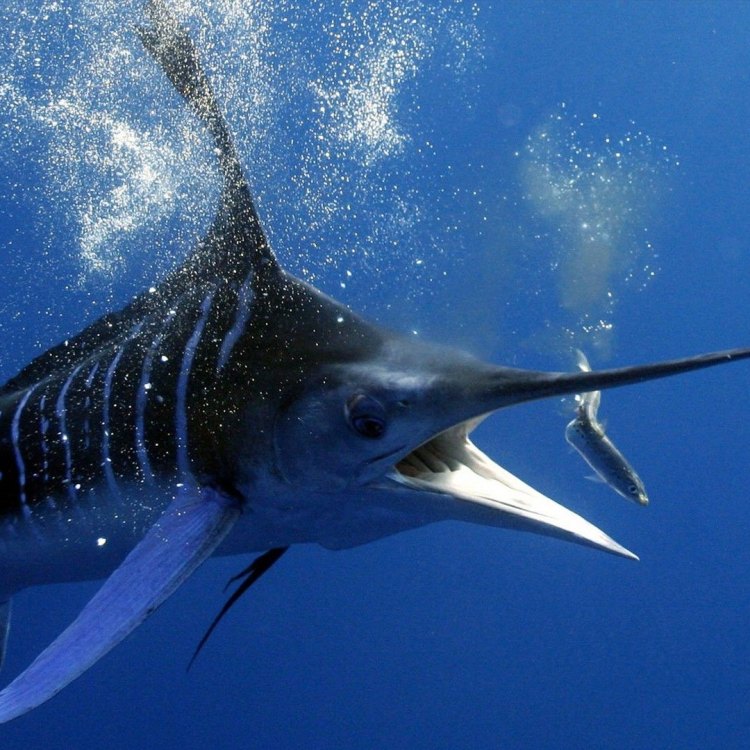
Swordfish
- Adult Size: Can weigh up to 1,400 pounds
- Average Lifespan: 10 to 15 years
- Reproduction: Oviparous
- Reproductive Behavior: Breeding occurs in warm waters
- Sound or Call: Unknown
- Migration Pattern: Migratory
- Social Groups: Solitary
- Behavior: Aggressive predators
- Threats: Overfishing, bycatch, habitat destruction
- Conservation Status: Vulnerable
- Impact on Ecosystem: Top predator in its ecosystem
- Human Use: Commercial and sport fishing
- Distinctive Features: Long bill resembling a sword, deep blue coloration
- Interesting Facts: Swordfish are one of the fastest fish in the ocean, capable of speeds up to 60 miles per hour
- Predator: Sharks and larger predatory fish
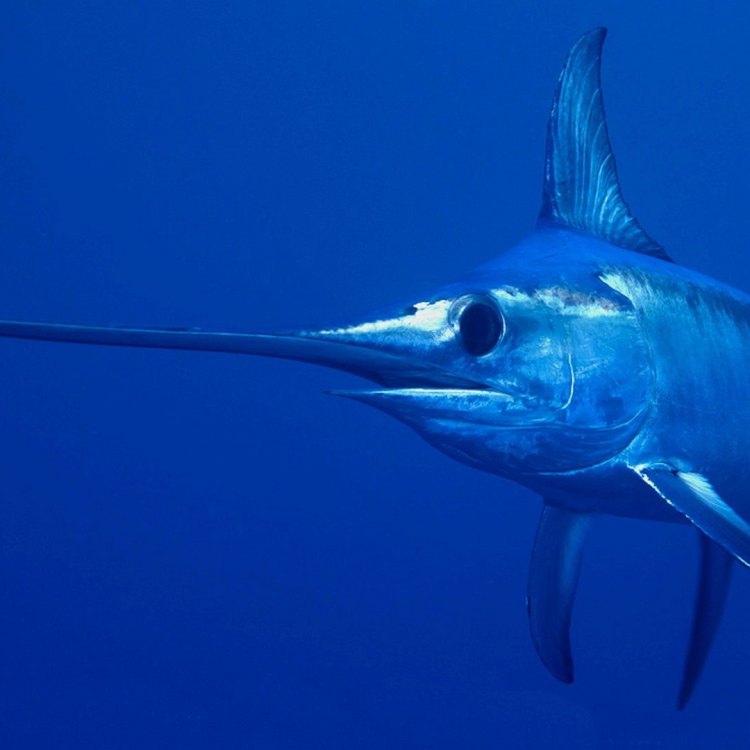
Xiphias gladius
The Mighty Swordfish: A Fascinating Top Predator of the Ocean
The ocean is a vast and mysterious place, home to countless creatures both big and small. Deep within its depths, one can find the mighty swordfish, a formidable and fascinating top predator of the ocean. With its distinctive features and impressive abilities, the swordfish has captured the imagination of humans for centuries.In this article, we'll take a deep dive into the world of the swordfish, exploring its size, lifespan, reproduction, behavior, threats, conservation status, and impact on ecosystems PeaceOfAnimals.Com. We'll also delve into its human uses, interesting facts, and even its own predators. So grab your scuba gear and let's explore the depths of the ocean to discover the secrets of the mighty swordfish.
The Magnificent Size and Lifespan of the Swordfish
The swordfish (Xiphias gladius) is a large and powerful fish, belonging to the family Xiphiidae. They can reach a massive size, with adult individuals weighing up to an astonishing 1,400 pounds, making them one of the largest marine predators in the ocean. This impressive size is further emphasized by their long and sleek body, reaching lengths of up to 10 to 15 feet.In terms of lifespan, swordfish can live for an average of 10 to 15 years. However, there have been reports of some individuals living up to 18 years. This relatively short lifespan is due to the swordfish's life history strategy, which involves fast growth and an early age at maturity. Despite their relatively short lifespan, swordfish can reach impressive sizes and hold a significant role in their ecosystem Syrian Hamster.
Reproduction and Breeding Behavior of Swordfish
Swordfish are oviparous, meaning they reproduce by laying eggs. However, unlike most fish, they do not release their eggs into the water. Instead, they lay their eggs in a coating of wax, which attaches them to floating objects such as driftwood or seaweed. This unique adaptation allows the eggs to be transported to more suitable hatching conditions, providing the offspring a better chance of survival.Breeding among swordfish occurs in warm waters, specifically in the Atlantic and Pacific Oceans. Male and female swordfish engage in courtship rituals, where the male will swim alongside the female, occasionally rubbing against her to stimulate egg production. Once the eggs are laid, the male will then fertilize them. However, not much is known about the exact breeding behavior of swordfish, making it an area of ongoing research.
Mystery Surrounding the Sound or Call of Swordfish
Interestingly, not much is known about the sound or call of swordfish. While many marine animals use sound for communication and navigation, it is unknown if swordfish do the same. Some theories suggest that swordfish may have a specialized organ to produce sound, but more research is needed to confirm this.One possible explanation for the lack of information is that swordfish are solitary creatures, and thus, do not rely on sound as a means of communication. However, with advancements in technology, researchers may soon uncover the mysteries of the swordfish's sound or call.
The Migratory and Solitary Nature of Swordfish
Swordfish are highly migratory, traveling long distances in search of food and suitable breeding grounds. They are found in the Atlantic, Pacific, and Indian Oceans, with some populations even venturing into the Mediterranean Sea. These impressive migratory abilities are possible due to their streamlined body and powerful swimming abilities, allowing them to cover great distances.Another interesting behavior of swordfish is their solitary nature. Unlike some other marine animals that form social groups, swordfish are typically found swimming alone. However, there have been some observations of small groups of swordfish, consisting of a male and a few females. These temporary pairings are thought to be for breeding purposes.
The Aggressive Predator and Top Predator Status of Swordfish
One of the most well-known and formidable characteristics of the swordfish is their aggressive predatory behavior. Armed with a long bill resembling a sword, they use it to slash and stun their prey before devouring it. Their sharp teeth and powerful jaws also aid in catching and consuming their food, which includes a wide range of marine animals such as squid, octopus, mackerel, and even other fish.This aggressive behavior has earned them the reputation of being one of the top predators in their ecosystem. As a top predator, swordfish play a crucial role in maintaining the balance of their respective food webs. Without them, there could be a ripple effect on the entire ecosystem, resulting in widespread consequences.
Threats to Swordfish: Overfishing, Bycatch, and Habitat Destruction
Unfortunately, despite their impressive abilities, swordfish face numerous threats that endanger their survival. One of the major threats is overfishing, as they are prized for their meat and prestigious status. Commercial and sport fishing of swordfish are widespread, with an estimated 50,000 to 60,000 metric tonnes caught annually.Another significant threat is bycatch, which is the unintentional catching of non-target species in fishing gear. Swordfish caught as bycatch are often discarded as they are not the intended species, resulting in a significant loss of life. This, coupled with the destruction of their habitats due to human activities such as pollution and oil spills, poses a severe threat to the survival of swordfish.
Vulnerable Conservation Status and Efforts to Protect Swordfish
Due to these threats, swordfish are classified as a vulnerable species on the IUCN Red List. This status signifies that swordfish faces a high risk of endangerment in the wild, highlighting the urgent need for conservation measures. Recognizing this, various organizations and governments are taking steps to protect swordfish and ensure their survival.One such effort is the implementation of fishing quotas and regulations to control the catch of swordfish. These measures also include the use of more sustainable fishing methods and gear that reduce bycatch. Additionally, there are also international agreements in place to protect swordfish, such as the International Commission for the Conservation of Atlantic Tunas (ICCAT).
The Impact of Swordfish on Ecosystems
As mentioned earlier, swordfish are top predators, playing a vital role in regulating the populations of their prey. Their presence also affects the behavior and distribution of other species within their ecosystem, creating a natural balance. Furthermore, swordfish also contribute to the marine food chain, where their nutrients are essential for the growth and survival of other marine organisms.However, as with any predator species, an increase or decrease in swordfish populations can have a significant impact on the entire ecosystem. Therefore, proper conservation efforts to maintain a healthy and stable population of swordfish are crucial for the well-being of their ecosystem.
Human Uses of Swordfish: Commercial and Sport Fishing
Apart from being a top predator in the ocean, swordfish also hold a significant economic value for humans. They are commercially fished for their meat, which is considered a delicacy in many countries and is in high demand in the market. The long bill of swordfish is also prized, with some being sold as souvenirs or for decorative purposes.Swordfish are also a popular catch for sport fishing enthusiasts, drawn to their impressive size and strength. However, due to conservation efforts and restrictions, recreational fishing of swordfish is strictly regulated to ensure sustainable practices.
Interesting Facts about Swordfish
Apart from their unique features and impressive abilities, swordfish also possess some interesting and lesser-known facts. For instance, they are one of the fastest fish in the ocean, capable of reaching speeds of up to 60 miles per hour. This remarkable speed makes them difficult to catch and a formidable predator in the ocean.Another interesting fact is that swordfish are capable of changing their coloration to match their surroundings. This ability, called countershading, helps them remain camouflaged and hidden from their predators. Furthermore, swordfish have a specialized organ called the ampullae of Lorenzini, which allows them to detect changes in water pressure and the movement of their prey.
Predators of Swordfish
Despite being a top predator in the ocean, swordfish also have their own predators. Their primary predators include sharks and larger predatory fish such as tuna and marlin. These predators can be a threat to the young and smaller swordfish, making it necessary for them to reach a larger size for better survival chances.In recent years, there have been reports of cannibalism among swordfish, with larger individuals preying on smaller ones. This could be due to declining populations resulting in competition for limited food resources.
Conclusion
In conclusion, the swordfish is an incredible and fascinating creature, with its mighty size, unique features, and impressive abilities. As a top predator in the ocean, they play a crucial role in maintaining the balance of their ecosystems. However, they face numerous threats, highlighting the need for conservation efforts to protect and ensure their survival for future generations to come. So the next time you hear about swordfish, remember the mighty and majestic creature that calls the ocean its home.
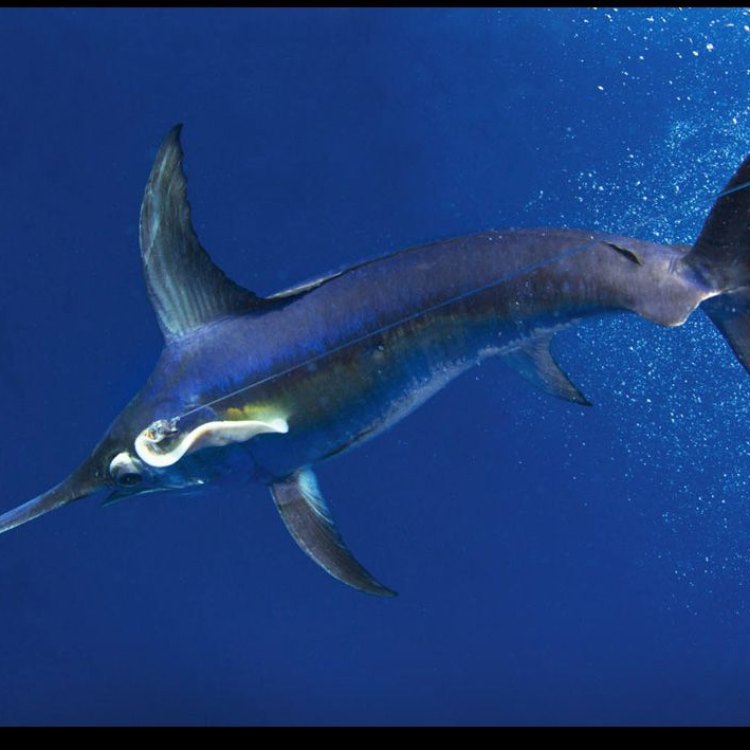
The Mighty Swordfish: A Master of the Ocean Depths
Disclaimer: The content provided is for informational purposes only. We cannot guarantee the accuracy of the information on this page 100%. All information provided here may change without prior notice.








